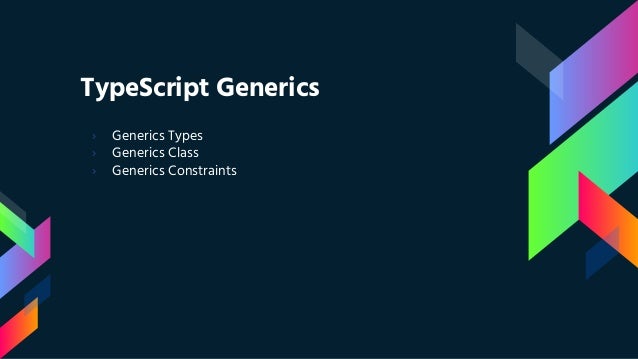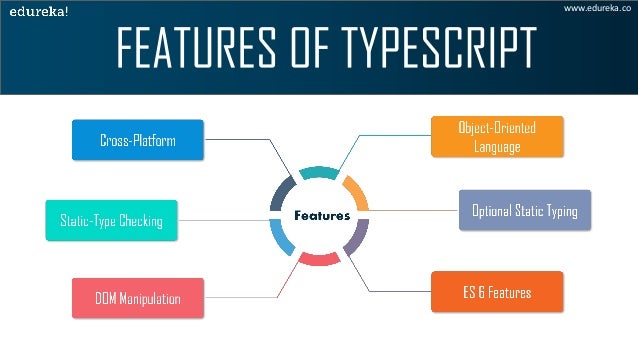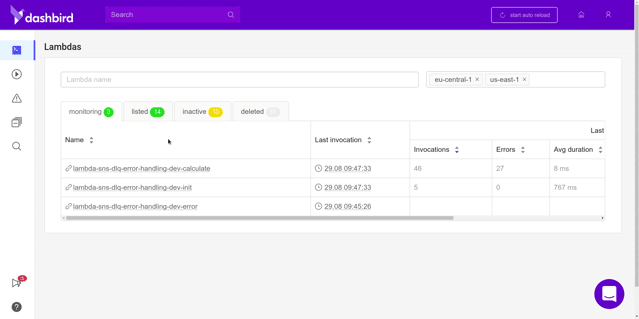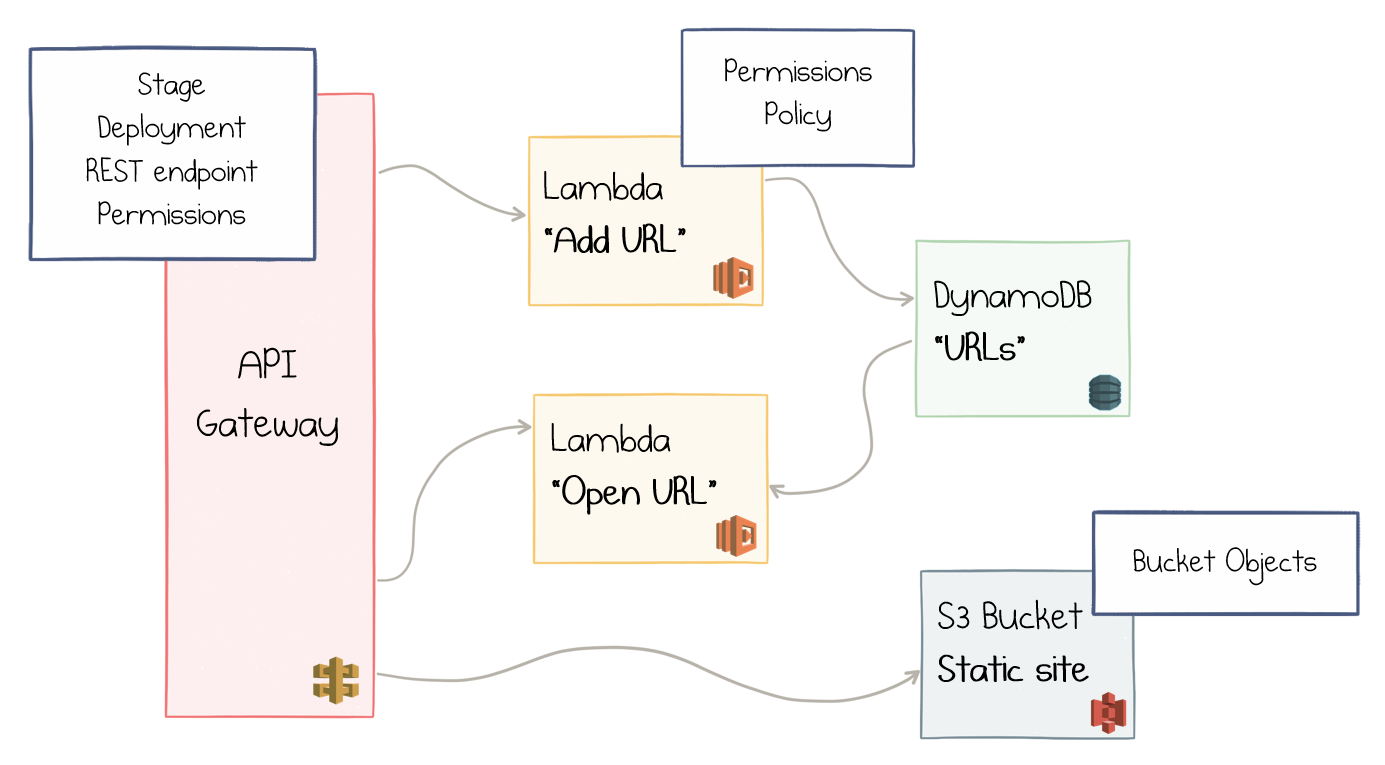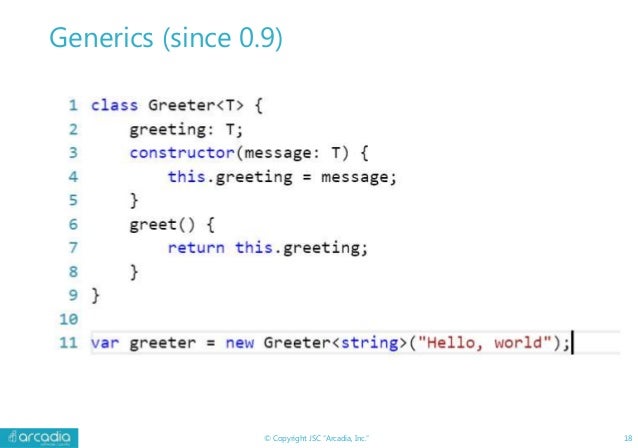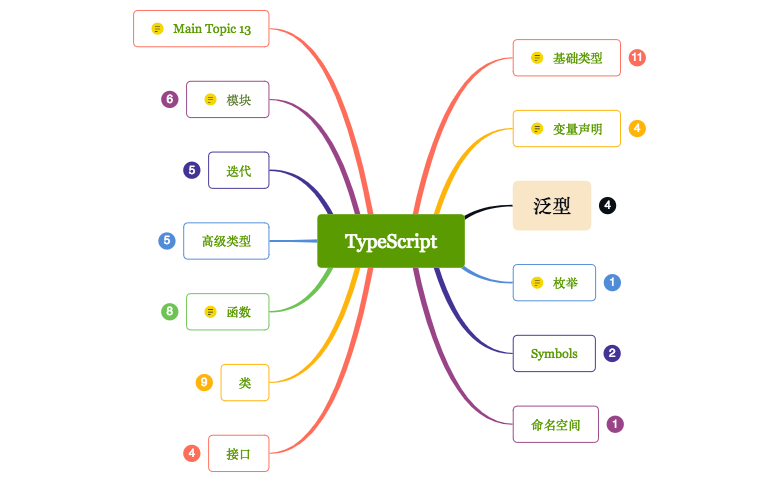Going back to my preliminary level, when software development started the issues it addressed where operational and not systemic. Running an executable with a sure parameters generated output and eliminated itself from the memory. As the trade progressed nonetheless the issues turned increasingly complicated, and the applications started expressing extra options. This itself did not require a paradigm shift, but with those features got here the continuously rising code bases and the mutation of the problem units. In a way you may say that software systems came to life- and life in its core is polymorphic. This rendered functional approaches progressively tougher and expensive to take care of which naturally lead to the adoption of the item oriented design. All that made new software to come into life- and again it faces the life's polymorphic nature. With the emergence of the IOT ecosystems we will see the same cycle once more, we will return to functional and than scale it to object. As a facet notice the conflict at hand right here for me is much like an argument which color is better the pink one or the green one, without any context. See Appendix E for current data on NRRs and listening to protection labeling requirements. In special instances, noise exposure originates from noise-generating headsets. See Appendix F for a dialogue of the techniques used to judge the noise publicity ranges of those employees. Due to native type refinement, a programmer usually does not have to write down any qualifiers on native variables within a method physique . However, the programmer should write type annotations for method signatures and fields, until the default annotations are correct. Local kind refinement does not change the supply code; it re-runs each time you run a checker. N Array of size rank, describing the dimensions of each dimension, n being the size of the outermost and n[rank-1] innermost dimension of a transform. Inembed Pointer of dimension rank that indicates the storage dimensions of the input information in memory. If set to NULL all different superior information structure parameters are ignored.
Istride Indicates the gap between two successive input elements in the least significant (i.e., innermost) dimension. Idist Indicates the space between the primary component of two consecutive alerts in a batch of the enter knowledge. Onembed Pointer of measurement rank that indicates the storage dimensions of the output data in reminiscence. Ostride Indicates the gap between two successive output elements within the output array within the least important (i.e., innermost) dimension. Odist Indicates the gap between the primary factor of two consecutive indicators in a batch of the output knowledge. Type The rework information type (e.g., CUFFT_R2C for single precision real to complex). The original skilled system for setting speed limits was developed by the Australian Road Research Board and was based on site research at over 60 locations. The subject information have been reviewed by a panel of specialists who used this information to provide you with decision rules for acceptable speed limits for several types of roads and visitors circumstances. This info was coded into a pc program which prompts customers to respond to a sequence of questions, which the system uses to advocate a speed limit. It is necessary to notice that the Australian professional system logic is difficult coded, and this technique does not learn from earlier expertise, as another "good" expert techniques do. Whole-program inference infers varieties for fields, method parameters, and method return types that don't have a user-written qualifier . The inferred type qualifiers are output into annotation files. The inferred type is the most specific sort that is compatible with all the makes use of in this system. For instance, the inferred type for a subject is the least upper bound of the forms of all the expressions which are assigned into the field. The alternate design would scale back program comprehensibility. Currently, a user can determine the annotation on a parameter or return worth by looking at a single file. If annotations might be inherited from supertypes, then a user would have to study all supertypes, and do computations over them, to understand the meaning of an unannotated sort in a given file. For declaration annotations, no computation is critical; that's the reason they may be inherited. Computation is critical for sort annotations as a end result of totally different annotations could be inherited from a supertype and an interface, or from two interfaces.
For return types, the inherited type ought to be the least higher bound of all annotations on overridden implementations in supertypes. For method parameters, the inherited type should be the best lower certain of all annotations on overridden implementations in supertypes. In every case, the Checker Framework would wish to issue an error if no such annotations existed. While I do feel that the article may be a bit biased its does present lots of gotchas that new C# developers should keep and eye out for. Some of the errors listed aren't C# unique and avoidable by merely educating ones self on how the language behaves (ex. value vs reference, types). Some options have to be prefaced with "relying on the case". I additionally really feel that the #9 might have missed the mark slightly bit, they are there for catching errors IF one happens and returning you to a "safe" place where you are ready to safely recuperate. However, it is correct in saying that exceptions should not be used as a normal control assertion. Even although I know better, I too, am responsible of utilizing them incorrectly once in a while. The mistake would additionally benefit from having a bit extra on tips on how to use exceptions correctly. LINQ like all language feature can be abused and used in such ways in which it does make things harder to understand however it is a highly effective device that should not be ignored. I like to use it when accessing information sources, and then favor other control loops for any processing on the info. This separates processing code from data access visually and helps hold things straightforward to spot and perceive. LINQ permits for the flexibility to create complex "SQL like" statements that MAY be more difficult to implement within the SQL taste of alternative. LINQ vs Extension strategies, it's key to keep your understanding of those clear. LINQ is not extension strategies, LINQ just isn't Extension methods, LINQ isn't extension methods. I actually have seen lots of confusion about what the difference is right here although plenty of extension methods can do linq like issues and they're OFTEN used together they are two very distinct language options. Extension methods allow for extending sorts that you don't necessarily have access to, similar to third party dll's. Linq is simply really a syntactic sugar that permits for a different method which could make issues conceptually easier to grasp. CufftExecC2R() (cufftExecZ2D()) executes a single-precision (double-precision) complex-to-real, implicitly inverse, cuFFT rework plan.
CuFFT uses as input knowledge the GPU memory pointed to by the idata parameter. The enter array holds only the nonredundant complicated Fourier coefficients. This function shops the actual output values within the odata array. And pointers are both required to be aligned to cufftComplex data kind in single-precision transforms and cufftDoubleComplex kind in double-precision transforms. If idata and odata are the identical, this method does an in-place rework. To help identify areas or zones the place lower noise ranges exist, a complete sound survey of the production area is recommended. It is also useful to plot the sound degree knowledge on an tools format or flooring plan, then add or draw contour traces of equal sound ranges. This ends in a noise contour map, which is usually helpful because it provides a easy illustration of the sound field over a big area. The information assortment requirements depend on the methodology chosen by a jurisdiction in setting posted velocity limits. Because objects can be created as subtypes of other objects, they'll inherit variables and methods from those objects. This allows objects to help operations outlined by anterior sorts without having to offer their own definition. The goal is to not repeat yourself—multiple makes use of of the identical code is hard to maintain up.
But practical programming also can achieve DRY by way of reusable features. Even although inheritance does contribute to that, so does the idea of closures in FP. This permits you to pinpoint many kinds of errors in C# much more shortly than in languages such as C++, the place faulty sort conversions may end up in arbitrary values being assigned to an object's fields. However, as soon as once more, programmers can squander this great feature, resulting in C# problems. They fall into this entice because C# supplies two other ways of doing issues, one which may throw an exception, and one which won't. Some will shrink back from the exception route, figuring that not having to write down a try/catch block saves them some coding. A approach to monitoring worker publicity without invading the ear canal has been developed. This sampling method evaluates the noise dose that a worker receives in the course of the precise workday while wearing an insert-type headset, a monaural or binaural muff, or a monaural or binaural foam headset. The approach involves instantly measuring the sound stress degree of a headset similar to the employees using a head and torso simulator that may measure acoustic alerts on the eardrum level. The electrical signal input to the worker's headset is break up into two, both equivalent to the original. One sign is fed to the worker's headset and the opposite is fed to the same headset . The monitoring headset is placed on the HATS in order that it is being "worn" in the identical method as the worker's headset. The sign measured from the HATS ear is fed to a set of electrical filters that carries out the HATS eardrum-to-diffuse-field switch operate. The output from the electrical filters is then fed to a noise dosimeter. The dosimeter reads the noise exposure dose in share. The proportion dose can be then calculated to a time-weighted average noise exposure stage in dBA. Unfortunately, we don't have commonplace codecs for every little thing, but you'll have the ability to probably imagine how one might create a smaller ecosystem within a company or a set of collaborating partners by counting on normal codecs. Type inference outputs probably the most particular sort qualifiers which are in keeping with all the source code it's given. (Section33.6.1explains when kind inference ignores some code.) This could additionally be completely different than the specification the programmer had in thoughts when writing tho code.
If the quantity of extra code required to put in writing good errors seems repetitive and overwhelming, the take a look at would possibly work better if table-driven, iterating over a listing of inputs and outputs defined in a data construction . The work to put in writing a good check and good error messages will then be amortized over many take a look at circumstances. The normal Go library is stuffed with illustrative examples, corresponding to inthe formatting exams for the fmt bundle. Go's commonplace testing package deal makes it easy to write down unit tests, nevertheless it lacks features supplied in different language's testing frameworks corresponding to assertion capabilities. An earlier section of this document defined why Go doesn't have assertions, and the same arguments apply to the use of assert in checks. Proper error dealing with means letting other checks run after one has failed, so that the particular person debugging the failure gets an entire image of what's wrong. It is extra helpful for a test to report thatisPrime offers the mistaken answer for two, 3, 5, and 7 than to report that isPrime gives the incorrect answer for two and due to this fact no more exams have been run. The programmer who triggers the test failure may not be conversant in the code that fails. Time invested writing an excellent error message now pays off later when the take a look at breaks. Type parameters allow what is named generic programming, during which functions and information structures are outlined when it comes to sorts that are specified later, when these functions and knowledge constructions are used. For instance, they make it potential to write down a perform that returns the minimal of two values of any ordered sort, without having to put in writing a separate version for each potential sort. For a extra in-depth explanation with examples see the weblog postWhy Generics?. This chapter specifies the habits of the cuFFT library features by describing their input/output parameters, data sorts, and error codes. The cuFFT library is initialized upon the primary invocation of an API perform, and cuFFT shuts down automatically when all user-created FFT plans are destroyed.
CuFFT provides a set of APIs that allow the cuFFT person to provide CUDA functions that re-direct or manipulate the info as it's loaded previous to processing the FFT, or stored as soon as the FFT has been carried out. Workers are understandably curious in regards to the noise dosimeter, and notably the microphone. Take time to explain that it only collects data on how loud the sounds are--it does not record speech. Activate the dosimeter and exchange its display cover, or lock out the controls earlier than the worker begins working. As an excellent practice, take sound level measurements frequently during the course of the noise dosimetry. The sound stage measurements doc the noise within the area at specific points in time and from particular sources. These values each validate the dosimeter reading and supply insight into how and when publicity is occurring. Some noise dosimeters log data that can be downloaded to a computer and later graphed in opposition to time to show how the employee's noise exposure varies over the course of a shift. This is a helpful function, but just isn't a substitute for good notes on the office and the sources of noise in specific occasions and locations. Enclosures, or personnel shelters, can provide a cheap means for lowering worker noise publicity instead of lowering gear noise levels. Control booths or rooms are commercially available from numerous producers, many of which are listed in the Noise and Vibration Control Product Manufacturer Guide (see Section VII-Resources).
Any of the vendors listed in the manufacturer's guide can present a value estimate upon request. As a minimal requirement, all control rooms ought to preserve an interior sound stage decrease than 80 dBA, which can minimize worker noise publicity. Should there be a need to communicate with employees inside a control room, nonetheless, then a better design criterion would be to limit sound levels to 60 dBA or much less. Because the identical interface is used for every useful resource, you probably can depend on with the power to retrieve a representation — i.e., some rendering of it — using GET. Because GET's semantics are outlined within the specification, you can make sure that you have no obligations whenever you name it — that is why the method known as "safe". GET helps very environment friendly and sophisticated caching, so in many cases, you don't even need to send a request to the server. You also can make certain that a GET is idempotent — when you problem a GET request and don't get a end result, you might not know whether your request by no means reached its destination or the response got misplaced on its way back to you. The idempotence assure means you'll be able to simply issue the request again. POST, which normally means "create a new resource", can additionally be used to invoke arbitrary processing and thus is neither protected nor idempotent. Macro defines a way for inserting generated code into a program.
A macro maps a sequence of argument expressions to a returned expression, and the ensuing expression is substituted directly into the program at the point the place the macro is invoked. Macros are a way to run generated code without calling eval, because the generated code instead merely turns into a half of the encircling program. Macro arguments could include expressions, literal values, and symbols. Macros may be defined for variable number of arguments , but do not settle for keyword arguments. Every macro also implicitly will get handed the arguments __source__, which contains the road quantity and file name the macro is recognized as from, and __module__, which is the module the macro is expanded in. You will change the copy to rename the annotations, and you will annotate libraries and/or your code to determine sources, sinks, and validation/sanitization routines. To make this conduct sound, the Nullness Checker forbids calls that might clear any built-in property, as described above. Improve the annotations, usually by writing extra annotations to find a way to better specific the specification. Sometimes you want to enhance annotations in a library that your program uses . The checker infers annotations for native variables (see Section31.7). Usually, you only have to annotate fields and method signatures. You should add annotations inside method our bodies provided that the checker is unable to deduce the proper annotation (usually on kind arguments or array element varieties, rather than on top-level types).
If f() throws an exception totally different from X and Y the surprising handler is invoked, which by default terminates. That's OK, but say that we now have checked that this can't happen and f is changed to throw a new exception Z, we now have a crash on our hands except we change use() (and re-test everything). The snag is that f() could be in a library we don't management and the brand new exception isn't something that use() can do something about or is in any way thinking about. We can change use() to pass Z via, but now use()'s callers probably have to be modified. Alternatively, we will add a try-catch to use() to map Z into a suitable exception. Note that modifications to the set of exceptions typically occurs at the lowest degree of a system (e.g., due to modifications to a community library or some middleware), so changes "bubble up" through long name chains. In a large code base, this could mean that no one may update to a new version of a library until the last consumer was modified. If use() is a half of a library, it might not be attainable to update it because a change might have an effect on unknown clients. Go permits a generic sort to have methods, but, apart from the receiver, the arguments to these methods cannot use parameterized varieties. The strategies of a sort determines the interfaces that the kind implements, but it is not clear how this is ready to work with parameterized arguments for methods of generic varieties.













